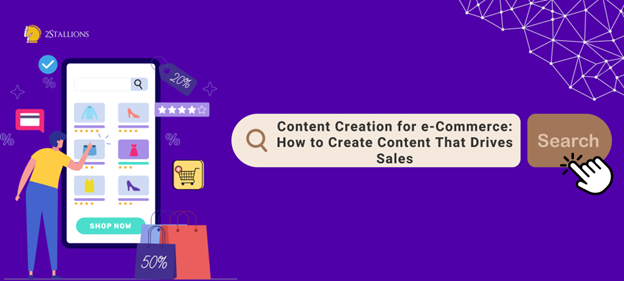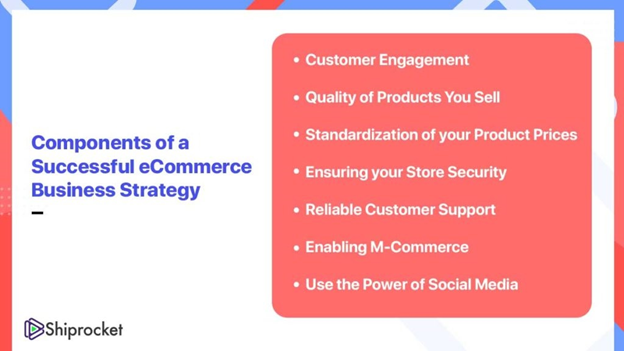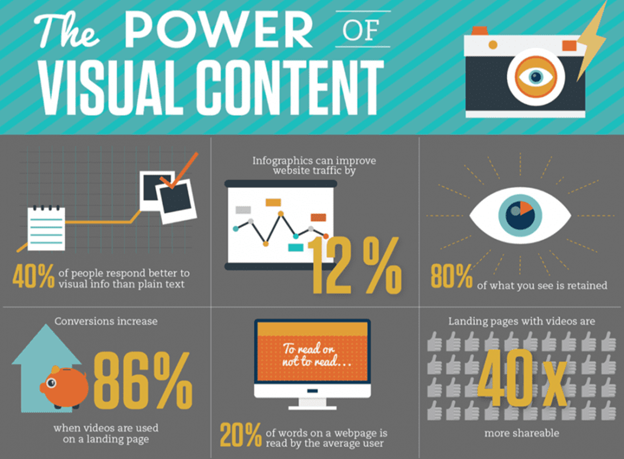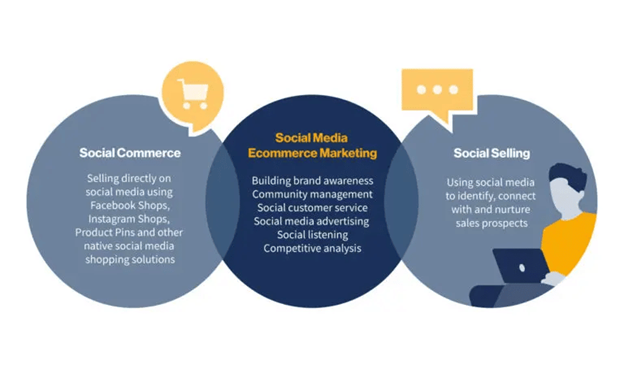SHARE

In today’s digital age, having compelling content is essential for driving sales in the competitive world of eCommerce. Whether you are a small business owner or a more prominent retailer, the right content can make all the difference in attracting and retaining customers. In this article, we will explore the importance of content in eCommerce, the key elements of effective eCommerce content, the role of visual and social media content, and how to measure the success of your content strategy.
[thrive_leads id=’8334′]
Understanding the Importance of Content in eCommerce
Content plays a crucial role in the success of any eCommerce venture. It serves as the bridge between your products or services and your potential customers. Effective content can create a connection, evoke emotions, and persuade shoppers to make a purchase. The days of simply listing products with a basic description are long gone. To stand out in a crowded market, you need to invest in engaging and persuasive content.
But what exactly makes content so important in the world of eCommerce? Let’s delve deeper into the topic and explore the various aspects that highlight its significance.
The Role of Content in Online Sales
When it comes to online shopping, customers rely solely on the information provided on the website. Detailed and accurate product descriptions are crucial in helping shoppers make informed purchasing decisions. Imagine you are looking to buy a new smartphone. Without proper content, you would be left in the dark about its features, specifications, and functionalities. It is the content that sheds light on these aspects and guides you towards making the right choice.
Moreover, well-crafted content can establish your brand’s credibility, build customer trust, and enhance their shopping experience. Imagine stumbling upon a website that has poorly written content, filled with grammatical errors and vague descriptions. Would you trust such a website with your hard-earned money? Probably not. On the other hand, a website with well-written content, providing detailed information and addressing customer concerns, would instil confidence and encourage you to make a purchase.
How Content Influences Consumer Behaviour
Studies have shown that well-crafted content can significantly impact consumer behaviour. By providing valuable information, addressing customer pain points, and highlighting the benefits of your products or services, you can influence shoppers’ decision-making process. Let’s take the example of a skincare brand. If the content on their website educates customers about the importance of skincare, highlights the key ingredients in their products, and showcases before-and-after pictures of satisfied customers, it creates a compelling narrative that entices potential buyers.
Moreover, compelling content can create a sense of urgency, helping to drive impulse purchases and increase conversion rates. Limited-time offers, exclusive discounts, and persuasive copy can create a fear of missing out (FOMO) among shoppers, prompting them to purchase before the opportunity slips away. This psychological trigger, when used strategically, can have a significant impact on sales. Content is not just a means to provide information; it is a powerful tool that can shape consumer behaviour, establish brand credibility, and drive sales. Investing in high-quality content that resonates with your target audience is essential for any eCommerce venture looking to thrive in today’s competitive market.

Key Elements of Effective eCommerce Content
Creating content that resonates with your target audience requires careful planning. Here are a few key elements that can make your eCommerce content more effective:
Writing Product Descriptions That Sell
A well-crafted product description can make all the difference in capturing the interest of potential customers. Instead of simply listing features, highlight the unique selling points, demonstrate the value, and create a compelling narrative that speaks directly to your target audience. Incorporating storytelling techniques and addressing customer pain points can also help to boost sales.
The Power of Persuasive Headlines
The headline is often the first thing that catches a shopper’s attention. A persuasive headline can make your product or content stand out in a sea of competition. Experiment with different headline formulae, such as offering a solution, providing a benefit, or evoking curiosity. Keep it concise, engaging, and relevant to your target audience.
Utilising SEO in Your Content Strategy
Optimising your eCommerce content for search engines is essential to drive organic traffic to your website. Conduct keyword research to identify relevant search terms that your target audience might use. Incorporate these keywords naturally throughout your content, including headings, product titles, and meta descriptions. However, be mindful not to overdo it and sacrifice the quality of your content.

The Role of Visual Content in eCommerce
While well-written content is essential, visual content also plays a crucial role in eCommerce. It engages customers, showcases products, and creates a visual representation of your brand. Here are two key aspects to consider:
The Impact of Product Photography
High-quality product photography is vital in convincing customers to click the “buy” button. Invest in professional photography that captures your products in their best light. Show multiple angles, close-ups, and demonstrate products being used in real-life situations. Good photography can evoke emotions and elevate the perceived value of your products.
Using Video Content to Boost Sales
Video content is gaining popularity in eCommerce and for a good reason. It allows you to showcase your products in action, tell stories, and engage customers on a deeper level. Consider creating product demonstration videos, customer testimonials, or behind-the-scenes footage. Video content is highly shareable and can significantly influence purchasing decisions.

Social Media Content for eCommerce
Social media platforms provide a powerful way to connect with your target audience and drive sales. Here are a couple of key considerations:
Crafting Engaging Posts for Social Media
Social media posts should be visually appealing, relevant, and shareable. Use high-quality images and compelling captions, and include a call-to-action to encourage followers to click through to your website. Experiment with different types of content, such as user-generated content, tutorials, or behind-the-scenes glimpses, to create a diverse and engaging social media presence.
The Importance of User-Generated Content
User-generated content, such as customer reviews and testimonials, can have a significant impact on purchasing decisions. Encourage your customers to share their experiences with your products or services. This not only provides valuable social proof but also builds trust and credibility with potential customers.
Measuring the Success of Your Content
Creating compelling content is only the first step; measuring its success is equally important. Here are a few key metrics to track:
Key Metrics to Track in your Content Strategy
Monitoring metrics such as website traffic, bounce rate, time on page, and conversion rate helps you understand how well your content is performing. Use data analytics tools to gain insights into which types of content resonate most with your audience and make data-driven decisions to refine and improve your content strategy.
Adjusting Your Content Strategy Based on Data
Data analysis should inform your content strategy. By analysing the metrics, you can identify areas for improvement and adapt your content accordingly. Experiment with different approaches, track your results, and iterate based on what works best for your target audience. A flexible and data-driven strategy is key to creating content that continues to drive sales.
In conclusion, content creation plays a pivotal role in eCommerce success. By understanding the importance of content, incorporating key elements, utilising visual content and social media and measuring the success of your efforts, you can create engaging content that drives sales and helps your eCommerce brand thrive in a competitive market. Remember, content is not just about informing but also about connecting with your target audience, inspiring them, and ultimately, persuading them to make a purchase.
[thrive_leads id=’3729′]
Frequently Asked Questions About Content Creation for eCommerce
What is the content of an eCommerce website?
It involves creating and distributing valuable, relevant, and engaging content such as blog posts, articles, video content, social media posts, product descriptions, and customer reviews to attract and engage prospective customers, driving traffic to the ecommerce site and ultimately increasing sales and conversions.
How Can I Improve My eCommerce Content?
What Is Content for Commerce?
Content commerce is the strategic integration of relevant products and media to deliver differentiated shopping experiences for consumers. For example, let’s say you’re checking out The Fascination’s Holiday Gift Guide.
Is Content Important For eCommerce?
Specialised and long-form content can be extremely helpful in creating a strong brand story. When they engage with the content that brands provide, potential customers build familiarity with the products and are more likely to feel they have a relationship with the brand even before making their first purchase.














